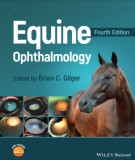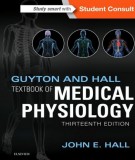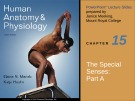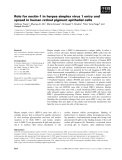
The retina and vision
-
Part 2 book "Equine ophthalmology" includes content: Diseases of the uvea, uveitis, and recurrent uveitis; diseases and surgery of the lens; glaucoma; diseases of the equine vitreous and retina; equine vision; inherited ocular disorders; equine neuro ophthalmology; ocular manifestations of systemic disease; national and international regulations on ophthalmic disease and medications; management of blind horses.
 440p
440p  muasambanhan10
muasambanhan10
 03-04-2024
03-04-2024
 4
4
 0
0
 Download
Download
-
The purpose of this study was to identify transcripts of retinal rod photoreceptors of the zebrafish. The zebrafish is an important animal model for vision science due to rapid and tractable development, persistent neurogenesis of rods throughout the lifespan, and capacity for functional retinal regeneration.
 18p
18p  vibeauty
vibeauty
 23-10-2021
23-10-2021
 10
10
 0
0
 Download
Download
-
Retinal degenerative diseases affect millions of people and represent the leading cause of vision loss around the world. Retinal degeneration has been attributed to a wide variety of causes, such as disruption of genes involved in phototransduction, biosynthesis, folding of the rhodopsin molecule, and the structural support of the retina.
 13p
13p  vijeeni2711
vijeeni2711
 24-07-2021
24-07-2021
 9
9
 0
0
 Download
Download
-
part 2 present the content: optics of vision physical principles of optics, receptor and neural function of the retina, central neurophysiology of vision, the sense of hearing, the chemical senses-taste and smell, cortical and brain stem control of motor function, contributions of the cerebellum and basal ganglia to overall motor control, cerebral cortex, intellectual functions of the brain, learning and memory physiologic anatomy of the cerebral cortex...
 505p
505p  dangkhaccuong
dangkhaccuong
 23-08-2019
23-08-2019
 14
14
 1
1
 Download
Download
-
(BQ) Continued part 1, part 2 of the document Mathematical biology and interdisciplinary applied mathematics has contents: Regulation of cell function, the circulatory system, the endocrine system, renal physiology, the gastrointestinal system, the retina and vision, the inner ear,… and other contents. Invite you to refer.
 621p
621p  thuongdanguyetan05
thuongdanguyetan05
 05-07-2019
05-07-2019
 16
16
 4
4
 Download
Download
-
(BQ) Continued part 1, part 2 of the document Guyton and hall: Textbook of medical physiology presents the following contents: General organization, the tactile and position senses; pain, headache, and thermal sensations; optics of vision; receptor and neural function of the retina,... Invite you to consult.
 464p
464p  thangnamvoiva2
thangnamvoiva2
 23-06-2016
23-06-2016
 144
144
 38
38
 Download
Download
-
Chapter 15 (part a) provides knowledge of the eye and vision. In this chapter, you will learn to: Describe the structure and function of accessory eye structures, eye layers, the lens, and humors of the eye; outline the causes and consequences of cataracts and glaucoma; trace the pathway of light through the eye to the retina, and explain how light is focused for distant and close vision; outline the causes and consequences of astigmatism, myopia, hyperopia, and presbyopia.
 39p
39p  tangtuy07
tangtuy07
 02-04-2016
02-04-2016
 41
41
 1
1
 Download
Download
-
Herpes simplex virus 1 (HSV-1) demonstrates a unique ability to infect a variety of host cell types. Retinal pigment epithelial (RPE) cells form the outermost layer of the retina and provide a potential target for viral inva-sion and permanent vision impairment.
 14p
14p  vinaphone15
vinaphone15
 28-02-2013
28-02-2013
 23
23
 2
2
 Download
Download
-
The cones function under daylight (photopic) conditions. The cone system is specialized for color perception and high spatial resolution. The majority of cones are located within the macula, the portion of the retina serving the central 10° of vision. In the middle of the macula a small pit termed the fovea, packed exclusively with cones, provides best visual acuity. Photoreceptors hyperpolarize in response to light, activating bipolar, amacrine, and horizontal cells in the inner nuclear layer. ...
 56p
56p  socolanong
socolanong
 25-04-2012
25-04-2012
 50
50
 2
2
 Download
Download
-
Stereopsis Stereoacuity is determined by presenting targets with retinal disparity separately to each eye using polarized images. The most popular office tests measure a range of thresholds from 800–40 seconds of arc. Normal stereoacuity is 40 seconds of arc. If a patient achieves this level of stereoacuity, one is assured that the eyes are aligned orthotropically and that vision is intact in each eye. Random dot stereograms have no monocular depth cues and provide an excellent screening test for strabismus and amblyopia in children.
 5p
5p  ongxaemnumber1
ongxaemnumber1
 29-11-2010
29-11-2010
 65
65
 4
4
 Download
Download
-
Central Serous Chorioretinopathy This primarily affects males between the ages of 20 and 50. Leakage of serous fluid from the choroid causes small, localized detachment of the retinal pigment epithelium and the neurosensory retina. These detachments produce acute or chronic symptoms of metamorphopsia and blurred vision when the macula is involved. They are difficult to visualize with a direct ophthalmoscope because the detached retina is transparent and only slightly elevated.
 5p
5p  ongxaemnumber1
ongxaemnumber1
 29-11-2010
29-11-2010
 83
83
 5
5
 Download
Download
CHỦ ĐỀ BẠN MUỐN TÌM























